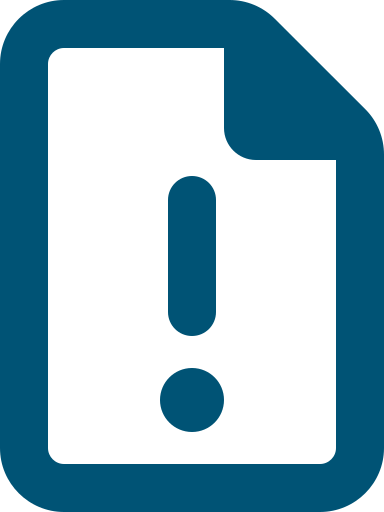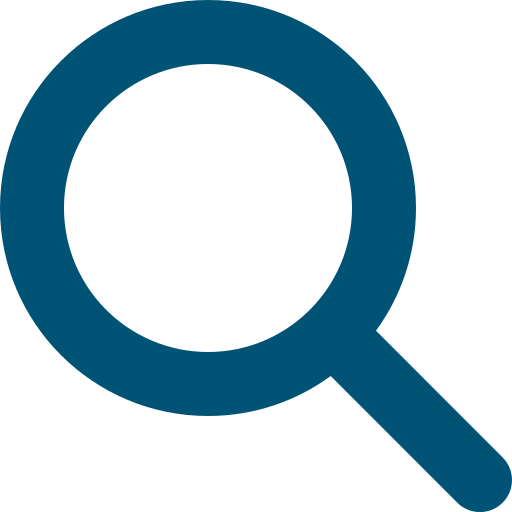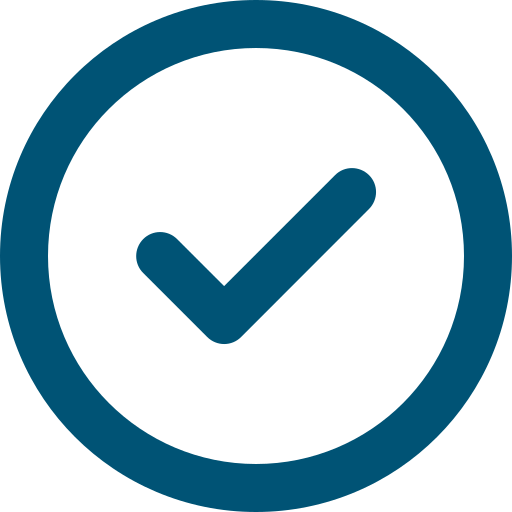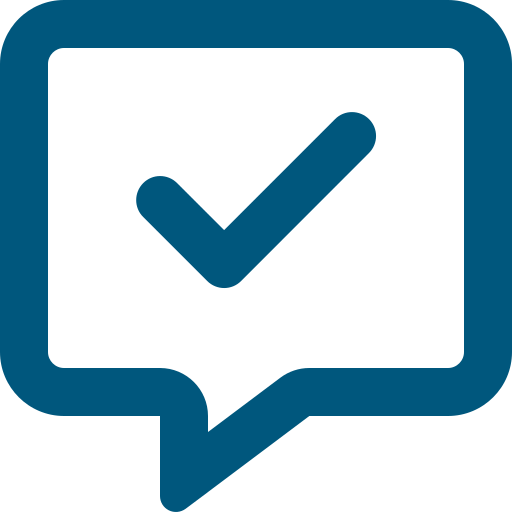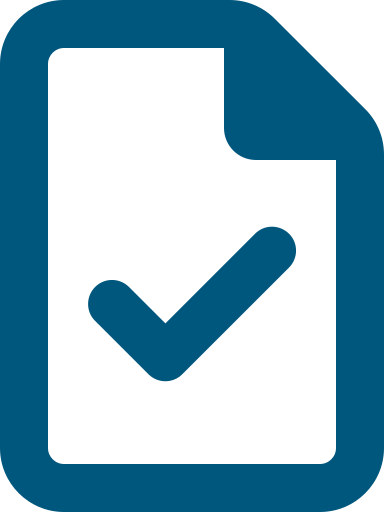What is the outcome you need to achieve?
The governing body must meet its duty to individuals and continuously improve the safety and quality of clinical care services delivered to individuals.
The provider must integrate clinical governance into corporate governance to actively manage and improve the safety and quality of clinical care services delivered to individuals.
Updates to guidance
An updated version of the strengthened Standards was published by the Department of Health, Disability and Ageing on 18 February 2025. Please see here for more information Strengthened Aged Care Quality Standards – February 2025 | Australian Government Department of Health, Disability and Ageing.
The Commission is currently updating our guidance content to reflect these changes. Please ensure you check back regularly.
Actions
The governing body:
- sets priorities and strategic directions for safe and quality clinical care services and ensures that these are communicated to aged care workers and individuals
- endorses the clinical governance framework
- monitors the safety and quality of clinical systems and performance.
The provider implements the clinical governance framework as part of corporate governance to drive safety and quality improvement.
The provider implements processes to ensure aged care workers providing clinical care services are qualified, competent and work within their defined scope of practice or role.
The provider and health professionals agree on their respective roles, responsibilities and protocols for providing quality clinical care services.
The provider works towards implementing a digital clinical information system that:
- integrates clinical information into nationally agreed digital health and aged care records
- supports interoperability using established national Healthcare Identifiers, terminology and digital health standards
- has processes for aged care workers and others to access information in compliance with legislative requirements.
Why is this outcome important?
Clinical governance* is important because it makes sure clinical care* services are safe and high quality. It does this by developing a culture of quality improvement* and putting in place effective systems* and processes*. Effective clinical governance* supports people to understand and follow the roles, relationships and responsibilities needed for an older person’s care. To improve clinical outcomes and wellbeing*, you need to:
- identify and manage clinical risks
- prevent harm
- improve clinical care* processes*.
Everyone involved in delivering clinical care* services has a role in clinical governance*.
The provider has processes* to collect and record data and feedback* from everyone involved in an older person’s care, including the older person. They collect this information in a way that is safe, supported and confidential. They identify key areas that can be improved through feedback* and by analysing data on clinical care* processes* and outcomes*. They share priorities and findings with the governing body*, older people and staff in a way that is meaningful and useful.
There are processes* that describe the roles and responsibilities* of contracted, employed and external health professionals*, as well as the provider, to provide clinical care* services.
Using clinical information effectively can reduce risk to an older person during transitions of care* and when there is a change to their health or deterioration*. Timely* access to up-to-date clinical information helps people to make clinical decisions. It also helps health professionals* to understand an older person’s clinical history when providing care. It means providers can plan for appropriate clinical care* when a person comes into or returns to their service.
Service context considerations
All providers have responsibilities for clinical governance* as outlined in Actions 5.1.1 to 5.1.5. While home services don’t have responsibility for all aspects of an older person’s care, all the time, they should still have systems* and processes* to address all the Actions in 5.1.
Clinical governance* is put in place using a clinical governance framework that is appropriate to how complex the service is and where care is provided. Where there are multiple providers or health professionals* involved in a person’s care, each role and responsibility* for that care should be clearly documented. The role of the older person, their family and other supporters should also be discussed and documented.
Update to guidance
An updated version of the strengthened Standards was published by the Department of Health, Disability and Ageing on 18 February 2025. Please see here for more information Strengthened Aged Care Quality Standards – February 2025 | Australian Government Department of Health, Disability and Ageing.
The Commission is currently updating our guidance content to reflect these changes. Please ensure you check back regularly.
Key tasks
Providers
Providers
Outcome 5.1.1
- The decisions a governing body* make are informed by high-quality and accurate data and reporting from provider management. This includes the decisions they make about:
- priorities for care
- areas that can be improved
- the strategic direction of the organisation
- resources.
Put in place systems* that drive safety and quality improvement*.
The provider has systems* to monitor and evaluate the clinical care* the service provides. This includes systems* that use the results from monitoring and evaluation activities to improve care and services.
Put in place processes* that make sure the governing body* has the information it needs to set priorities, strategic directions and monitor clinical outcomes* and processes*.
- Put in place a schedule for reporting to the governing body* on the quality of the care you’re providing (Outcome 2.3).
- Use data you collect on how the service is performing to report to the governing body*. This data should include:
- feedback* from older people receiving care, their supporters, families, carers, workers* and other stakeholders, including information from complaints* and other types of feedback*
- clinical incidents* and other clinical measures or outcomes*
- clinical trends and reporting from other similar services
- how effective the clinical governance* system* is in supporting quality care* and managing clinical risk
- data collected for mandatory Quality Indicators (QI)
- data from routine data collection*, including when someone starts receiving care from your service
- risks and incidents* including serious, non-reportable and near misses*, as well as how they were managed and resolved
- hospital transfers and the reasons for transfer.
- Make sure reports for the governing body* are clear and use accurate data and quality analysis.
- Make sure you have involved workers*, health professionals* and older people receiving care in developing the goals for the service. You also need to share these goals with them.
Outcome service context
All residential and home service providers have a governing body* who understands the organisation’s priorities for the care they provide.
Outcome 5.1.2: Put in place processes* and systems* in the clinical governance framework.
A clinical governance* framework describes the systems* an organisation uses to support workers*, health professionals* and committees to understand and perform their roles. It also explains their responsibilities and accountabilities for providing person-centred*, safe, coordinated* and effective care.
- Put in place the endorsed clinical governance* framework by:
- communicating a statement from the governing body* about the organisation’s culture, priorities and commitment to providing quality clinical care* services to all older people, workers* and health professionals*
- outlining the roles, responsibilities and organisational structure for safely delivering quality clinical care* services in the provider’s system*
- using measures of success in clinical governance* and safe and quality clinical care* services and reporting on these measures
- putting in place processes* for reviewing the clinical governance* framework
- making sure plans, policies* and procedures* are accessible and used by workers* and health professionals*. This includes documents and systems* that support the clinical governance framework and achieving safe, quality clinical care* services.
- putting in place processes* for workers* to help them monitor, evaluate and improve clinical care* services. This can include using risk management systems*
- clearly describing roles and responsibilities* for clinical governance* and safe, quality clinical care* services in position descriptions. This makes sure that everyone working in the service understands, including contracted health professionals*.
- Consider the resources you need to provide care based on contemporary, evidence-based practice*, including training and development for workers*.
- Make sure updates or changes to practice and assessment tools are identified and assessed against current legislation, guidelines and evidence.
Monitor, review and improve clinical care* services.
- The decisions a governing body* makes are informed by high-quality and accurate data and reporting from provider management. This includes the decisions they make about:
- priorities for care
- areas that can be improved
- the strategic direction of the organisation
- resources.
- Use internal and external data you’ve collected about the service, to report to the governing body*. This includes data on:
- how effective clinical processes* are in supporting quality clinical care* services
- care outcomes* and performance
- feedback* from older people, others involved in their care* and workers*, including complaints*
- clinical incidents* and issues and other clinical indicators
- the diversity* or people who use their service including things like cultural background or disability (Outcome 1.1).
- Present data about the service in a way that is clear and useful to the governing body*, managers, workers* and older people.
- Consider how you use the clinical governance* framework in practice and how you review it to make sure you’re providing quality care* that is person-centred*, safe, coordinated* and effective.
- Use information and reporting from the monitoring you do (explained above) to review and improve clinical care* services.
- Consider how you can measure success. Measures could include:
- comparing complaints* data to show how you’ve improved
- positive feedback* from older people
- evidence workers* know your key policies* and procedures* for safe, quality clinical care* services and are seen following them
- feedback* from workers* show they’re satisfied in their job
- positive feedback* from visitors to the service
- improvement in data reported through the National Mandatory Aged Care Quality Indicator program.
Outcome service context
Residential and home service providers
All residential and home service providers put in place a clinical governance* framework.
To achieve Outcome 5.1, the clinical governance* framework needs to reflect the complexity of the clinical care* the service provides.
Home service providers
Home service providers aren’t responsible for all aspects of an older person’s care, all the time. However, they need to have systems* and processes* that meet all the Actions in 5.1 appropriate to the size and service context.
Outcome 5.1.3
Put in place systems* for employing, contracting and managing clinical staff.
- Make sure these systems* follow the processes* outlined in Outcome 2.9.
- Verify and record credentials, qualifications, training and registrations.
- Make sure management and workers* understand the scope of practice* for clinical care* staff and contractors.
- Put in place processes* to make sure that contracted and visiting health professionals* have appropriate qualifications and experience to provide clinical care* services.
Put in place processes* for managing clinical staff.
- Make sure position descriptions and recruitment processes* clearly state the clinical skills, experience, knowledge and qualifications each role needs.
- Make sure there are processes* for:
- describing and monitoring the scope of clinical practice
- providing clinical education and training
- monitoring and managing performance
- managing health professional* registration where required
- ensuring workers* and health professionals* are aware and using the provider’s safety and quality systems* and processes*
- delegating work to support quality care*, within workers’* scope of practice*.
- Clearly describe roles and responsibilities* for clinical governance* and safe, quality clinical care* services and make sure everyone working in the service understands them.
- Make sure that roles and responsibilities* for clinical governance* and safe, quality clinical care* services are:
- included in position descriptions
- the terms of reference for committees
- described in policy and process* documents.
Monitor, review and improve clinical care* services.
- Regularly* review the organisational structure, position descriptions and contracts to make sure that roles and responsibilities* for safe, quality clinical care* services are clearly explained at all levels of the organisation.
- Make sure a committee or specific person has the delegated responsibility for overseeing health professional registration and scope of practice*.
- Ask older people for feedback* on the care they receive from workers*.
- Make sure there are processes* to address concerns workers* raise about what is expected in their role.
- The provider should ensure sufficient and appropriately qualified staff are available to provide the right care. The service culture should support clinical staff to report if they are not able to meet care needs safely. Clinical staff must always work within their professional scope of practice.
- Review processes* for monitoring, training and verifying competency and ensuring it aligns with evidence base practice (Outcome 2.9).
Outcome service context
Residential and home service providers
All residential and home service providers have a responsibility to make sure they have processes* to verify the qualifications, training and experience of their workers*.
All providers have responsibilities for clinical governance* as outlined in Actions 5.1.1 to 5.1.5. This includes using a clinical governance* framework that reflects the complexity of the clinical care* the service provides.
The provider and workers* understand workers’* roles and scope of practice*.
There are processes* to make sure workers* perform their roles within their scope of practice*.
Home service providers
Home service providers aren’t responsible for all aspects of an older person’s care, all the time. However, they should have systems* and processes* that meet all the Actions in 5.1 appropriate to the size and service context.
Outcome 5.1.4
Coordinated care* makes sures older people have access to the clinical care* services that are right for them at the right time and in the right place.
Put in place processes* for agreement between health professionals* and the provider.
- The provider is responsible for facilitating access to care for older people when the provider can’t meet their clinical care* needs.
- These responsibilities could include:
- working with visiting health professionals* or practitioners to develop clear policies* for procedures* and practices for clinical care* services
- preparing private spaces for visits if the older person prefers
- working with the older person to get ready for appointments and understand what has been recommended for their care and their care and services plans*
- supporting older people to access virtual care such as telehealth*
- providing health professionals* access to clinical information systems* to make sure clinical information (like assessments, medicines lists*, charts and notes) are:
- available
- reviewed and updated
- securely stored in the provider’s system*
- making sure workers make any needed changes after health professional* reviews, including to medicines*
- making sure the health professional* can access the older person’s home (if this is the provider’s responsibility) or the residential aged care home at the time of their appointment
- making sure the clinical workers and external health professionals* can access information about the services and level of care that the provider provides and how to refer to specialists when needed.
- Workers need to be informed and are responsible for keeping informed about any changes to an older person’s care needs after treatment or assessment by health professionals*, as appropriate, and with consent of the older person or their supporter
- An agreement between health professionals* and a provider could include:
- what the older person expects and what their goals of care* are
- a list of responsibilities for clinical care* services
- what behaviours and responsibilities are expected of both groups when providing clinical care*
- the processes* for providing care that is included in the provider’s clinical governance framework or the processes* the provider and the health professional* have agreed to
- protocols for how clinical information is used including access, consent, sharing and editing
- a timeframe to review the agreement
- Processes* for updating care and services plans* and reporting feedback* and incidents*.
Monitor, respond and improve clinical care* services.
- Ask for feedback* from the older person to check that they’re satisfied with their care. Use this to improve care.
- Provide care in line with the agreed processes* .
- Review agreements regularly* between health professionals* and providers to make sure they’re fit for purpose and support them to provide high-quality clinical care* services.
- Review treatment and care plans regularly* to make sure they are in line with contemporary, evidence-based practice*.
Outcome service context
For Action 5.1.4, there are important differences between home and residential service providers. The way this action is applied is different depending on the service context.
Clinical governance* is put in place using a clinical governance* framework that is appropriate to how complex the service is and the type of service.
Where there are multiple providers or health professionals* involved in an older person’s care, the roles and responsibilities* for care should be clearly documented.
The role of the older person, their family and other supporters, should also be discussed.
Home service providers
Older people in their own home may have several services or health care requirements met by health professionals*, carers or others that have no relationship with the provider. What they do may affect the care the older person needs from the provider.
Communicate with other people and organisations that are also providing care. However, it’s important to remember that this needs the consent of the older person or their representative. Where possible, have a written agreement between health professionals* and providers. This makes sure everyone involved in an older person’s care know and understand their clinical care* needs.
Outcome 5.1.5
These key tasks can help all services work towards an integrated clinical information system*. Consider how these can work in your service.
Use processes* in Outcome 2.7 to make sure information is secure and accurate and you use it with consent. ‘Working towards’, means if you don’t yet have a clinical information system*, the provider has:
- looked at available systems*
- considered what they need the system* to do
- developed a detailed plan to put in place a suitable system*.
An effective clinical information system* can support an older person’s clinical safety. It can improve communication and continuity and coordination of care between settings, health professionals* and providers.
Using standard national terminology* means that information included in an organisation’s clinical information system* are interoperable* with other clinical information systems*. For example, the information can work with primary health provider systems* and can be used for de-identified data analysis.
It also means that clinical information in an organisation’s system* can be understood and used by other health professionals* accessing this information. Using health identifiers* makes sure the right information is connected with the correct older person. It also identifies the health professional* or organisation that documented or reviewed the information in the system* . Not all older people have, or have access to, My Health Record*. Find out if older people have My Health Record* and document this information into your systems*.
Put in place a system* to safely use clinical information.
- Include clinical information in care and service plans and use it to plan for care and when a person transitions between care settings and also for delivery of care and support of the older person not just planning.
- Consider how outcomes* of assessment from more than one health professional* can be included in the providers clinical information system* to help plan care.
- Consider how you’ve structured and organised the information you collected. Consider how you can use it securely, with the older person’s consent and in line with legislation.
- Manage clinical information using a digital clinical information system* that uses conformant software* and meets digital health standards.
- Consider how you can add data into systems* once and use it multiple times for different purposes. For example, work towards systems* that are integrated. This:
- reduces mistakes
- makes it easier for health professionals* to know where to find the most up-to-date information
- makes sure data can be used for analysis and reporting.
- Providers should consider what data they collect and why they collect it to make sure they’re collecting data for the appropriate reasons.
Put in place processes* to manage clinical information.
- To safely manage clinical information, providers put in place processes* for:
- transferring information from existing systems* into new systems*. This helps mitigate the risk of incomplete, missing, unavailable or incorrect information in new systems*.
- medication management*. The guidance for Outcome 5.3 has more information on documenting and managing medicines*.
- external health professionals* to access the clinical information system* when needed and with consent. This allows them to document outcomes* of assessment and other relevant information. Also, consider how health professionals* can access your clinical information system* when offsite or during telehealth* or virtual appointments.
- health professionals* such as registered nurses, entering clinical information in the clinical information system* and using health identifiers*
- workers to access the information they need for their role with the consent of the older person or their supporter
- health professionals* to have access to clinical information in line with the older person’s wishes and relevant legislation
- older people to access and review their care and services plans*, if they ask to (Outcome 1.3). This should include considering displaying the plans onscreen or printing them.
- using the healthcare provider directory when sending secure messages, referrals, discharge summaries and test results.
- Regularly* review advance care plans* in the provider’s clinical information system* with the older person if that is their preference.
- Consider how you can support the older person to access and understand advance care planning* documents.
- The provider has processes* and the responsibility to:
- ask for consent and record the outcome* for sharing and accessing clinical information
- assign and communicate roles and responsibilities* for documenting and using clinical information.
- Eligible workers have health professional* identifiers and use these and the older person’s individual health identifier* when accessing or adding information in an older person’s My Health Record* or other health record systems*. Using healthcare identifiers* supports interoperability* (exchange of information) with nationally agreed health records and other clinical information system*, such as primary health provider systems*.
- Develop and put in place a security and access policy to make sure workers keep older people’s clinical information safe.
Monitor, review and improve processes* for clinical information accuracy and use.
- Assess your software systems* to understand how you manage and share clinical information currently.
- Identify gaps and areas where you can improve. For example, duplicating the same or similar information or manual entries that don’t use standard terminology or following the provider’s processes* for recording clinical information.
- If you don’t have a system*, you can use the Australian Digital Health Agency’s register of conformity to find suitable systems* that meet the service’s needs.
- Use the resources on the Digital Health Agency’s website to make sure relevant clinical information is integrated with other systems* using suitable software. If the provider doesn’t have a clinical information system*, they need to develop a plan to find a suitable software system*.
- Review processes* and access requirements when you identify issues with the accuracy or security of information.
- Make sure workers and health professionals* understand procedures* for managing offline clinical information.
Outcome service context
Residential and home service providers
Providers are not expected to make sure external systems* are compatible. However, the provider should be working towards a system* that can link with other systems* where and when this is possible.
Residential service providers
There are resources for residential service providers to help them to use standard national terminology* and healthcare identifiers*. They can then use these when adding clinical information into their clinical information system* and whether the person has a My Health Record*.
Home service providers
Consider how the clinical information system* will be used in the service by looking at current clinical information processes*. This will help providers work out which system* is appropriate for their service or provider. Consider where providers can combine data collection. Consider how clinical information is managed when putting in place or working towards a new system*.
